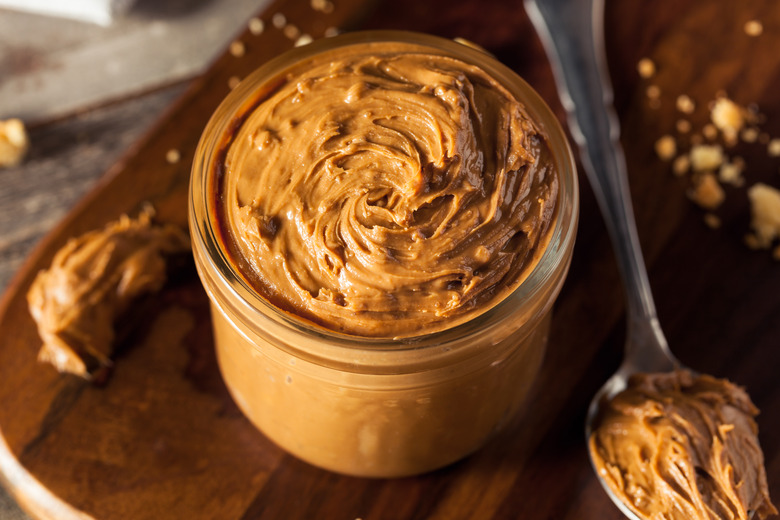List Of Things Dr. George Carver Invented With Peanuts
He was born a slave, kidnapped as an infant with his mother, and re-sold into slavery in the deep South. Fortunately, George Washington Carver's owner tracked him down — his mother was never found — and after slavery was abolished, raised and educated him. Carver went on to become a prolific artist, college educator, chemist, botanist and the man who raised the peanut from a lowly legume to a cash crop that helped save the South's farming economy. His development of uses for the peanut run the gamut from soup to soap.
Foods
Foods
In 1896, farmers did not view peanuts as a cash crop, but sharecroppers had worn out their fields planting them with cotton year after year. Carver knew plants containing protein help replenish the soil. He convinced farmers to rotate the planting of cotton with peanuts. Carver then found ways farming families could incorporate peanuts into their diets.
He devised peanut recipes for soup, cookies and candy. Carver encouraged farmers to use peanut oil and peanut milk for cooking. Roasted, ground peanuts could be used for coffee. Blanched, ground peanuts mixed with egg made a coating for sweet potatoes, which were then fried to make mock fried chicken.
Animal Feed
Animal Feed
Carver knew that farmers would benefit from being able to use peanuts to feed their livestock as well as their families, and he produced several types of animal feed from peanuts. Peanut hearts were good feed for egg-laying hens.
The hulls would be used to make bran and meal. The peanut plant could be dried and used as hay. Carver also noted that hogs fed a diet of peanuts and corn produced high quality hams and bacon.
Colorants
Colorants
Carver didn't create new plants. He discovered ways to combine plants with other materials to produce useful products. In his laboratory at Tuskegee University, Carver experimented with several plants, such as sweet potatoes and soybeans, for making plant dyes.
He manipulated peanut pigment to produce various dyes for cloth and leather. He also used peanut pigment to make wood stains, paint and ink.
Paper
Paper
Paper is made from fibers, and in most cases of modern paper, the fiber used is wood fiber. Carver found that the fibers of the peanut plant could be used to make a variety of papers. He used the whole of the peanut plant, except the peanut itself, to make different kinds of paper.
The fibers of the peanut vine were useful in making white paper, colored paper and newsprint. Kraft paper was produced using the peanut hull, or shell, fibers. The fibers of the very thin peanut skin was used to make a rough type of paper.
Other Products
Other Products
Carver is credited with inventing about 300 uses for the peanut. He issued bulletins to farmers and housewives explaining how to use peanuts to make soap, face creams, axle grease, insecticides, glue, medicines and charcoal.
For all his research and accomplishments, Carver patented only three of his peanut inventions and was not interested in fame or fortune. His inventiveness with peanuts, however, led to it becoming one of the six most produced crops in the U.S. by the 1940s.
References
- Biography.com: George Washington Carver
- America's Library: George Washington Carver: The Peanut Man
- Texas A&M AgriLife Extension: Fruit & Nut Resources: How to Grow The Peanut and 105 Ways of Preparing It For Human Consumption; George Washington Carver
- Howard University: Center for Excellence in Teaching, Learning and Assessment: George Washington Carver's Contributions to America
- Boiled Peanut World: George Washington Carver: Inventions-History-Quotes-Film
- National Park Service: Selected Carver Recipes
- University of North Carolina: Documenting the American South: George Washington Carver: Advocate for Southern Farmers
Cite This Article
MLA
Turner, Laura Leddy. "List Of Things Dr. George Carver Invented With Peanuts" sciencing.com, https://www.sciencing.com/list-things-dr-george-carver-invented-peanuts-5896/. 13 March 2018.
APA
Turner, Laura Leddy. (2018, March 13). List Of Things Dr. George Carver Invented With Peanuts. sciencing.com. Retrieved from https://www.sciencing.com/list-things-dr-george-carver-invented-peanuts-5896/
Chicago
Turner, Laura Leddy. List Of Things Dr. George Carver Invented With Peanuts last modified March 24, 2022. https://www.sciencing.com/list-things-dr-george-carver-invented-peanuts-5896/
